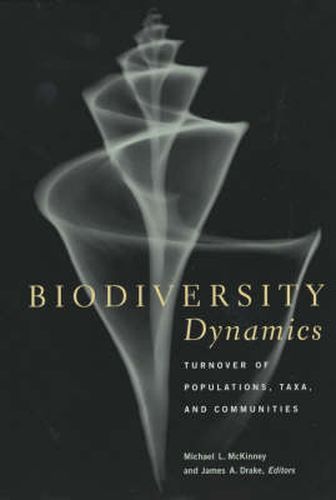Readings Newsletter
Become a Readings Member to make your shopping experience even easier.
Sign in or sign up for free!
You’re not far away from qualifying for FREE standard shipping within Australia
You’ve qualified for FREE standard shipping within Australia
The cart is loading…






How will patterns of human interaction with the earth’s eco-system impact on biodiversity loss over the long term - not in the next ten or even 50 years, but on the vast temporal scale dealt with by earth scientists? This text brings together data from population biology, community ecology, comparative biology and palaeontology. It starts with an overview of the concept of biodiversity dynamics, explaining why turnover needs to be addressed in terms of scales of time and space and why it is so important to look at speciation and extinction together, though as independent processes. This work is divided into two parts, the first exploring turnover at the species level and the second investigating larger-scale community and ecosystem turnover. Part one has such topics as the relationship of geographic range to diversification and extinction rates, the phylogenetic constraints on evolution of various traits, and the evolution of complexity. In part two, papers focus on subjects such as how fine and course-scale observation of ecosystems often yield widely disparate results, the question of diversity equilibrium over the ages and how evolutionary turnover is crucial to understanding the origins of biodiversity.
$9.00 standard shipping within Australia
FREE standard shipping within Australia for orders over $100.00
Express & International shipping calculated at checkout
How will patterns of human interaction with the earth’s eco-system impact on biodiversity loss over the long term - not in the next ten or even 50 years, but on the vast temporal scale dealt with by earth scientists? This text brings together data from population biology, community ecology, comparative biology and palaeontology. It starts with an overview of the concept of biodiversity dynamics, explaining why turnover needs to be addressed in terms of scales of time and space and why it is so important to look at speciation and extinction together, though as independent processes. This work is divided into two parts, the first exploring turnover at the species level and the second investigating larger-scale community and ecosystem turnover. Part one has such topics as the relationship of geographic range to diversification and extinction rates, the phylogenetic constraints on evolution of various traits, and the evolution of complexity. In part two, papers focus on subjects such as how fine and course-scale observation of ecosystems often yield widely disparate results, the question of diversity equilibrium over the ages and how evolutionary turnover is crucial to understanding the origins of biodiversity.